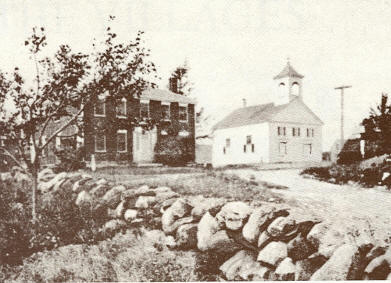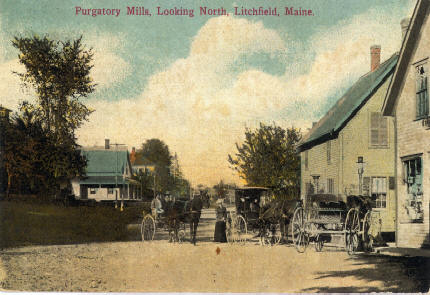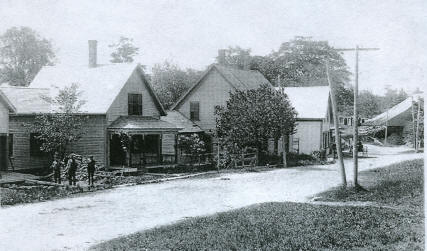|
Early Villages
|
|
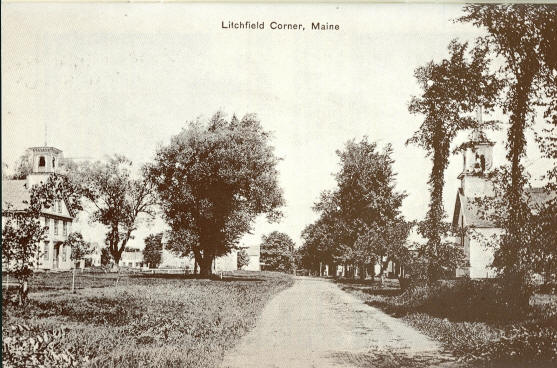 Litchfield Corner About 1900 The southernmost village, at the four corners where the Litchfield-Hallowell and Richmond-Sabattus roads cross, has always been "The Corner." It was the site of both Litchfield Academy and the Liberal Institute, the Lincoln School, the Masonic Hall, the Congregational Church, branch post offices, stores, doctors' offices, a pharmacy, a public house, a hotel, Stewart's Hall, a steam mill, a shoe shop, a blacksmith's shop, the Litchfield Fire Insurance Company and Bosworth the coffin maker. In the picture the Academy is on the left and the Church on the right, with the Stewart building behind the shade tree on the left. source: Litchfield Yesterdays
|
|
|
True's Corner Or The North About 1900 This crossroads was known through the years as South Litchfield, "The North", True's Corner and Bachelder's Corner, the last two names commemorating keepers of the brick tavern. Besides the tavern the community included the North Baptist Church (shown), the Willard School, Condon's general store, a post office and a waiting station of the A. and K. Street Railway. The tavern was built by Asa Bachelder of brick manufactured on the place. Bachelder had come to Litchfield from Loudon, N.H. in 1818 to farm, run the tavern, and help maintain a stagecoach line. The tavern became a stagecoach stop on the Augusta to Portland line; horse and buggies were "put up" there while their owners took the stage or (in later years) the "electrics." Kate Jack recalls that when her Aunt Annie Starbird lived at the tavern there was a large loom in the ell where the stair carpet as woven, Downstairs off the kitchen there was a huge cold pantry where they made pies in the fall for all winter - enough to fill as many as eight long shelves of that early deep freeze. source: Litchfield yesterdays
|
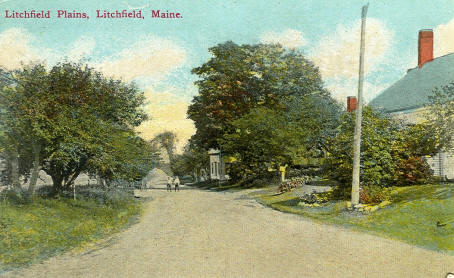 The Plains - Early Pottertown Potter's and other mills brought about the early growth of the Plains Village. Here at the center of the town were the town house, the cattle pound, the fairgrounds, the Plains Baptist Church, the Plains cemetery, the Brick School, a post office, as many as three stores, a carriage shop and the mills on Potter's and Spring Brooks. source: Litchfield yesterdays |
|
|
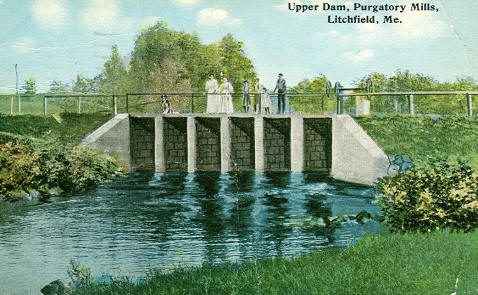 Upper Dam, Purgatory Mills |
|
Purgatory Village Before 1920 From left to right the buildings were the George Rogers house, the Merriman house, the Frank Adams store and at the extreme right the mill with shingle and lumber piles. All three houses, Mrs. Leland Gilman says, "served as post offices at one time or another."
|
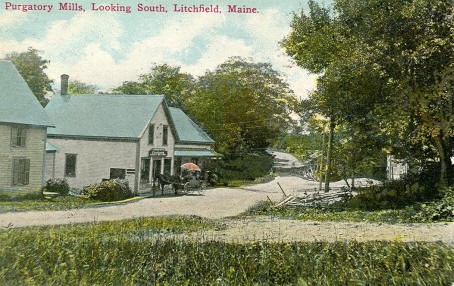 Looking South |
| Purgatory seemed
to have received its name from a humorous incident that occurred in
August, 1776, when William Gardiner and a party of his friends came
to this locality to inspect the old dam, timbers and plank. The next
day, on their return to Gardiner, some one asked where they had
spent the previous night, and Mr. Gardiner replied, "in Purgatory -
the mosquitoes and black flies were so thick we couldn't get a wink
of sleep." The reply was repeated and laughed over by the people of
the surrounding country, till they refused to call it by any other
name but Purgatory. Preachers, map makers and
the U.S. Post Office have tried Pleasant Valley, North
Litchfield and Litchfield Post Office, but the old name is
indelible. source: The History of Kennebec County More Photos Of Purgatory Village
|
|
